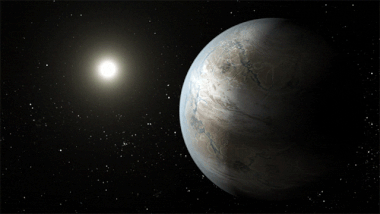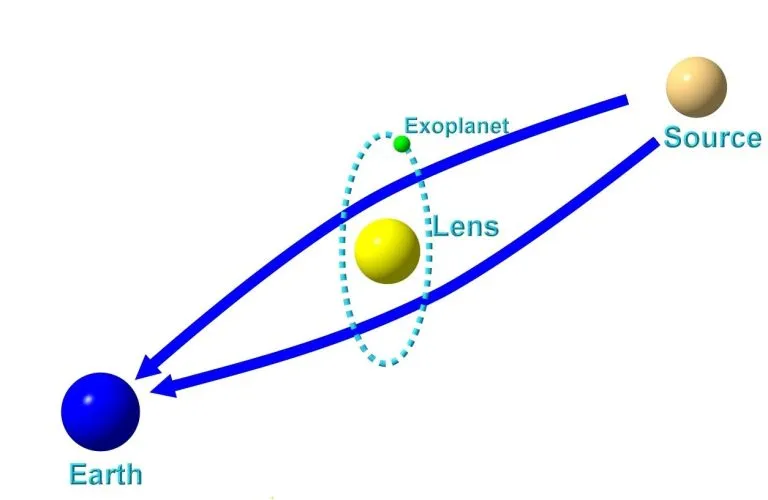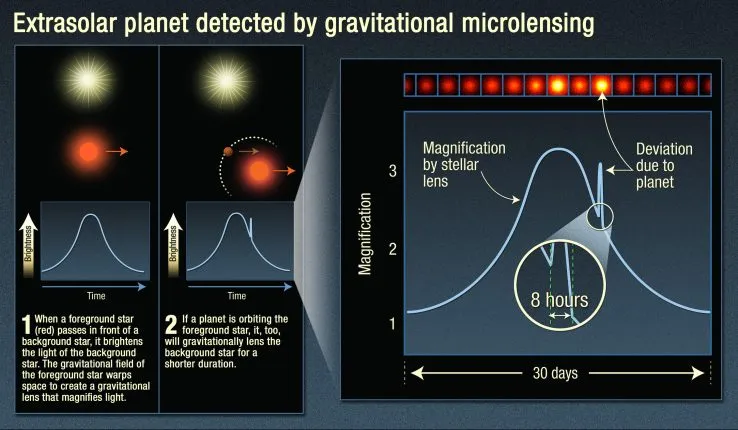The artificial intelligence (AI) system trained based on real astronomical observation data has now surpassed astronomers by filtering a large amount of data to find new explosive stars, identify new types of galaxies, and detect the merger of massive stars, which has improved the new discovery rate of the world's oldest science. But astronomers at the University of California, Berkeley, have found that an artificial intelligence algorithm can reveal something deeper: the undiscovered connections hidden in the complex mathematics generated by general relativity - especially how the theory can be applied to finding new planets around other stars**

Published in [Nature astronomy] on May 23( https://www.nature.com/articles/s41550-022-01671-6 ) 》In a paper in the journal, researchers described how an artificial intelligence algorithm was developed to detect exoplanets more quickly when such a planetary system passed in front of the background star and brightened it briefly -- a process called gravitational microlens -- and found that the theory used to explain these observations decades ago was very incomplete.
In 1936, Albert Einstein used his new theory of general relativity to show how the light from distant stars was bent by the gravity of the foreground star, which not only brightened it when it was seen on the earth, but also often divided it into several light points or twisted it into a ring, which is now called Einstein's ring. This is similar to the way a hand lens can focus and enhance the light from the sun.
But when the current scene is a star with a planet, the light curve, which becomes brighter over time, is more complex. More importantly, there are often multiple planetary orbits that can equally explain a given light curve -- the so-called degradation. This is that man has simplified mathematics and neglected the overall situation.

However, the artificial intelligence algorithm points out a mathematical method that can unify these two main degradation phenomena when interpreting what the telescope detects during the microlens, indicating that these two "theories" are actually a special case of a broader theory. The researchers admit that this theory may still be incomplete.
"The machine learning reasoning algorithm we previously developed has enabled us to discover some new and basic things about the general relativistic effect governing the light bending of two large mass objects," Joshua bloom wrote in a blog post when uploading his paper to the preprint server arXiv last year. Bloom is professor and Dean of astronomy at the University of California, Berkeley.
He compared the findings of Keming Zhang, a graduate student at the University of California, Berkeley, with the recent links established between two different mathematical fields by deepmind, Google's artificial intelligence team. Taken together, these examples show that artificial intelligence systems can reveal the basic associations that humans miss.
"I think they constitute the first, if not the first, time that artificial intelligence has been used to directly generate new theoretical insights in mathematics and astronomy," bloom said. "Just as Steve Jobs suggested that computers could become bicycles for the mind, we have been looking for an artificial intelligence framework to serve as an intelligent rocket ship for scientists."
"This is a milestone in artificial intelligence and machine learning," stressed co-author Scott Gaudi, a professor of astronomy at Ohio State University and one of the pioneers in using gravitational microlenses to discover exoplanets. "Keming's machine learning algorithm has found this degradation phenomenon, which has been ignored by experts in this field in decades of data work. This suggests how future research will develop with the help of machine learning, which is really exciting."
Discovery of exoplanets by microlens
More than 5000 extrasolar planets have been found around the stars in the Milky way, although few people actually see them through telescopes - they are too dark. Most of them are detected because they produce Doppler oscillations in the motion of their host stars, or because the light of their host stars is slightly dimmed when they pass in front of their host stars - this is the focus of NASA Kepler's mission. More than 100 have been discovered through the third technology, namely microlens.

NASA's Nancy grace Roman space telescope is scheduled to launch in 2027. One of its main goals is to find more exoplanets through microlenses. This technology has advantages over Doppler and transit technology because it can detect low mass planets, including earth sized planets, which are far away from their stars and the distance is equivalent to Jupiter or Saturn in our solar system.
Researchers began to develop an artificial intelligence algorithm two years ago to analyze low light level data more quickly, determine the mass of stars and planets in these planetary systems, and the orbital distance between these planets and stars. Such an algorithm will speed up the analysis of hundreds of thousands of events that may be detected by the Roman telescope to find 1% or less of the events caused by extrasolar planetary systems.
However, one problem astronomers face is that the observed signals may be blurry. When a lonely foreground star passes in front of the background star, the brightness of the background star will rise steadily to a peak, and then fall symmetrically to its original brightness. This is easy to understand both mathematically and experimentally.
However, if the foreground star has a planet, the planet will produce a separate brightness peak within the peak caused by the star. When trying to reconstruct the orbital configuration of exoplanets that generate signals, general relativity usually allows two or more so-called degenerate solutions, all of which can explain the observations.
Gaudi said that so far, astronomers have generally dealt with these degenerative problems in different ways, both simplistic and artificial. If the distant starlight is close to the star, the observation results can be interpreted as the wide orbit or near orbit of the planet - astronomers can usually use other data to solve this fuzzy problem. The second type of degradation occurs when the background starlight passes near the planet. However, in this case, the two different solutions for planetary orbits are usually only slightly different.
According to Gaudi, these two simplified schemes of two body gravitational LLL are usually sufficient to determine the true mass and orbital distance. In fact, in a paper published last year, bloom, Gaudi, Zhang Keming and two other co authors of the University of California, Berkeley, Professor Jessica Lu of astronomy and graduate student Casey Lam, described a new artificial intelligence algorithm that does not rely on the knowledge of these explanations. The algorithm greatly speeds up the analysis of low light level observations, provides results in a few milliseconds instead of a few days, and greatly reduces the amount of computer computation.
Then, zhangkeming tested the new artificial intelligence algorithm on the low light level curves of hundreds of possible star and exoplanet orbital configurations, and found some unusual things: there are other fuzzy places, which are not taken into account by these two explanations. He concluded that the common explanation for low light level is actually a special case of a broader theory that explains all kinds of fuzziness in low light level events.

"The previous two degradation theories deal with the situation where the background stars seem to be close to the foreground stars or planets," Zhang said. "The artificial intelligence algorithm not only shows us hundreds of examples of these two cases, but also shows that the star does not pass close to the star or planet, and cannot be explained by the previous two theories. This is the key to our new unified theory."
Gaudi was skeptical at first, but after zhangkeming put forward many examples that the first two theories did not conform to the observation results but the new theory conformed to the observation results, he began to accept them. Zhangkeming actually read the data of more than 20 previous papers that reported the discovery of exoplanets through microlenses, and found that in all cases, the new theory is more consistent with the data than the previous theory.
Gaudi said, "people have seen these microlens events. They actually show this new degradation phenomenon, but they just don't realize it. It's really just that machine learning is looking at thousands of events, where it becomes impossible to miss."
Zhangkeming and Gaud have submitted a new paper, which strictly describes the new mathematics based on general relativity and discusses this theory in the case of microlenses with more than one exoplanet orbiting a star.
The new theory makes the explanation of low light level observation more ambiguous technically, because there are more degenerate solutions to describe the observation. But the theory also clearly shows that it is easier to determine the correct orbit and mass by observing the same low light level event from two angles, such as the earth and the orbit of the Roman space telescope. That's what astronomers currently plan to do, Gaudi said.
"Ai proposed a new way to look at the lens equation and found something really deep about its mathematics," bloom said. "Artificial intelligence is becoming a new tool. It is not just a blunt tool in our toolbox, but a really smart thing. Together with experts like Ke Ming, they can do some basic things."